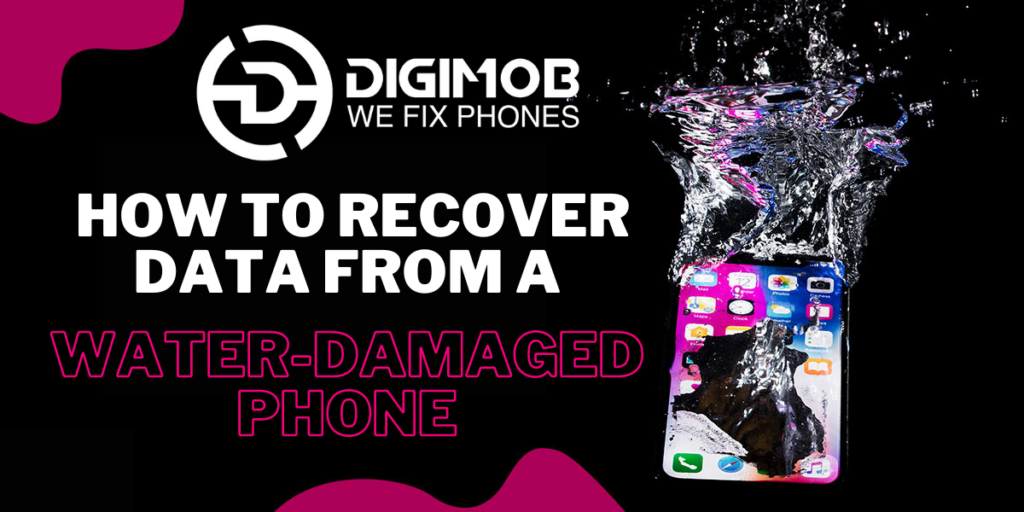Introduction: In the age of digital dependency, our smartphones have become repositories of cherished memories, important documents, and irreplaceable data. However, a sudden encounter with water can turn our prized devices into potential data disasters. Whether it’s a splash, a submersion, or an accidental spill, water damage can wreak havoc on your phone and leave you in a panic. Fear not, though, as this comprehensive guide will walk you through the steps on how to recover data from a water-damaged phone, potentially saving your valuable information and memories.

Understanding the Severity of Water Damage: Before diving into data recovery methods, it’s crucial to understand the severity of the water damage. Phones typically have liquid damage indicators (LDIs) that change color when exposed to water. Check these indicators to assess the extent of the damage. If the indicators are triggered, it indicates water exposure, and the severity depends on factors like the type of liquid and the duration of exposure.
- Immediate Actions: The first moments after your phone encounters water are crucial. Swift action can significantly increase the chances of successful data recovery. a. Power Off the Device: The immediate response should be to power off the phone. This prevents short circuits and minimizes the risk of permanent damage. b. Remove the Battery (if possible): If your phone has a removable battery, remove it to prevent electrical damage. For non-removable battery phones, skip this step. c. Remove SIM and Memory Cards: Extract the SIM card and any external memory cards from the phone. This helps protect your data stored on these removable components.
- Drying Techniques: Once the initial steps are taken, the next focus is on drying the device. However, it’s crucial to note that certain drying methods can cause further harm if not executed properly. a. Use Desiccants: Place the phone in a bag of silica gel packets or uncooked rice. These desiccants help absorb moisture and facilitate drying. Leave the phone in the bag for at least 48 hours. b. Avoid Heat Sources: While it may be tempting to use heat sources like hair dryers, ovens, or microwaves, they can damage the internal components of the phone. Stick to natural drying methods. c. Ventilation: Place the phone in an area with good air circulation. This can aid in the evaporation of residual moisture.
- Professional Assistance: If the water damage is severe, it might be wise to seek professional help. There are specialized services that can disassemble and clean the internal components, increasing the chances of successful data recovery. However, this can be expensive, and there’s no guarantee of complete success.
- Data Recovery Software: Once you’ve ensured that the phone is completely dry, it’s time to attempt data recovery using specialized software. There are several reputable programs designed for this purpose. a. Connectivity: Use a USB cable to connect your phone to a computer. Ensure that the computer recognizes the device. b. Select a Reliable Software: Choose a reputable data recovery software compatible with your phone model. Examples include Dr.Fone, iMobie PhoneRescue, and Disk Drill. c. Follow Software Instructions: Install and run the chosen software, following the instructions provided. The software will scan the device for recoverable data.d. Preview and Recover: Once the scan is complete, preview the recoverable files and select the data you want to retrieve. Follow the prompts to initiate the recovery process.
- Cloud Backups and Synchronization: If you have enabled cloud backups or synchronization services like Google Drive, iCloud, or Dropbox, your data may already be saved. a. Check Cloud Storage: Log in to your cloud storage account and check for recent backups. Restore the data to your newly acquired or repaired phone. b. Synchronization Settings: Ensure that your phone’s settings are configured to automatically sync data with the cloud to prevent future data loss.
- Preventive Measures: Once you’ve successfully recovered your data, it’s essential to implement preventive measures to avoid a repeat scenario. a. Waterproof Cases: Invest in a waterproof case to add an extra layer of protection to your device, especially if you’re frequently around water. b. Avoid High-Risk Situations: Be mindful of your surroundings and avoid exposing your phone to potential water hazards. c. Regular Backups: Make it a habit to regularly back up your data. This ensures that even if your phone encounters water damage, your most recent data is secure.

Find your nearest Digimob Mobile Repair location https://digimob.com.au and connect with a team member to promptly resolve your water damage issues.
Conclusion: Recovering data from a water-damaged phone can be a challenging and stressful process, but with the right actions and tools, there is hope. Swift response, proper drying techniques, and the use of reliable data recovery software are key components of the recovery journey. Additionally, implementing preventive measures and maintaining regular backups can significantly reduce the impact of potential future incidents. Remember, the sooner you act, the better your chances are of salvaging those precious memories and crucial information from the depths of water damage.


